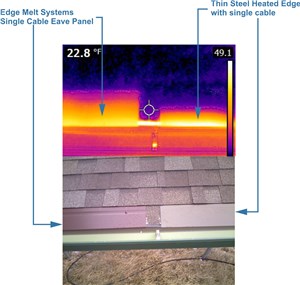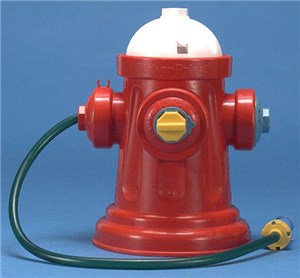Heat Transfer Myths (well, at least half truths) Exposed!
We have been reporting for some time on the superiority of our roof ice prevention systems - made from heavy gauge aluminum - over competitor roof heat panel systems made from thin steel. It appears as people are catching on - they won't even publish data sheets on their website any longer. Perhaps we can expect a material change from thin 26g. pre-finished steel to heavy gauge .040 pre-finished aluminum.
(Update 4/7/2017 - I feel a little prophetic. The purveyors of thin steel systems have now thickened up their product. They went from 26 ga. to 24 ga. steel and add .032 aluminum. Step in the right direction. Still, I wonder why not just go all the way and use .040 aluminum like the real experts have been using all along. Kudos for the effort. What's next though? Maybe they will finally understand what heat transfer is all about instead of just throwing something against the wall to see if it sticks!)
So, now the discussion has changed to direct heat transfer. Let's consider a few basics first:
- All radiant heat panel systems rely on the law of thermodynamics.
- All radiant heat panel systems distribute heat primarily by conduction - which is the movement of heat energy through a solid.
- Maximizing heat transfer from the heat cable to the melting surface results in best in class design.
- Maximizing heat transfer throughout the radiant heat panel is equally important.
That last point is really the key. You see, if the material which the heat panel is made out of is a poor conductor of heat, then the whole system will suffer. The type of heat cables used in radiant roof ice prevention systems are known as self regulating heat cables. These cables are able to adjust their power output internally (a subject for another blog post). In essence, it allows the cable to keep up with demand. The colder and/or snowier it gets the more heat the heat cable produces.
Now, put that cable in a conductive material. The heat panel will draw the heat out of the cable and it is distributed throughout the radiant roof edge
system. Efficient conduction (read aluminum heat panel) means the heat cable can continue to produce more heat to keep up with demand. Inefficient conduction (read thin steel heat panel) means the heat stacks up around the cable and the self regulating nature of the cable kicks in more aggressively. That is what happens with thin steel heated edge systems.
"Wait a minute - wouldn't that make the thin steel heated edge system more efficient?"
Yes - but under the wrong circumstances. If you needed a system that was left on for long periods of time when no snow was on the roof, then this might be a more efficient system. But when you need a roof ice prevention system to actually do the work of melting snow and preventing ice dams, the thin steel heated edge system will struggle to keep up. The result is sometimes only enough heat produced to make ice rather than keep it from forming.
Okay, now for the proof.
The thermal image here has two heat panels with the same heat cable running through them both. The panel on the right is fabricated from 26g. pre-finished steel. The panel on the left side is fabricated from .040 pre-finished aluminum. The top 40% of both panels are underneath the second course of shingles. You can see on both of them, the shingle area obviously has a cooler surface temp than the bottom portion which is not covered.
The stats:
Ambient air temp was 5 degrees F. Very little to no wind.
Cloudy day. 9am - so no direct overhead sunlight.
The system was left on for two hours before taking images.
Head to head results
You can draw your own conclusions. It is possible to concoct studies from "independent" engineering firms. But seeing is believing. Our .040 pre-finished aluminum roof heat panels transfer heat far more effectively. The heat doesn't just stack up at the edge - it transfers efficiently throughout the panel providing a greater roof ice preventing surface.
The use of thin steel as the conductive heat panel is akin to hooking up a standard garden hose to a fire hydrant. Yes, water will travel through the thin hose, but not to the potential of the hydrant. Not a problem if you want to wash the car. But a really big deal if you need to put out a fire at your house. Thin steel systems = poor performance.

Are aluminum extrusion based systems obsolete?
Not so fast on that one either. This is another half truth. Yes, extrusion based systems are more expensive. Of course they are - there is more material and another run of heat cable. But the benefit of that is the ability to produce enough heat to prevent ice dams. The concentrated placement of the heat cables and the highly conductive nature of the extrusion coupled with the .040 aluminum cover panel is a time tested system. Having been installed since the mid 1990's, this is a proof of concept, not just a concept being tested on unsuspecting customers.
But, more on that in the future...
Need more information?
We are here to help. From answering questions to design assistance to quick turn around shipping on all of our high quality roof ice preventing products. We promise peace of mind without the hype.
Start the process by Contacting Us!